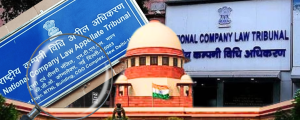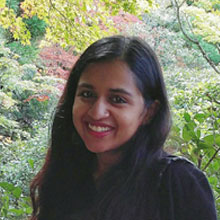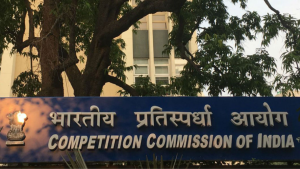

Method to the Madness
Chetan Bhagat clearly had it all wrong. He thought that two states were problematic. What then, would he say of twenty four?
Twenty four states, two thousand five hundred and fifty three unique values, all to be sorted into a 290 x 24 matrix. This was the December that Shiva and I faced. I’m happy to say we are still standing at the end of it all, armed with a notebook full of pertinent observations to boot. Shiva gave you his take on the exercise last week, so to follow up, here I am with my thoughts.To quickly recap, the Rule of Law project (henceforth the ROLP) is collating a database of all the cases pending before the higher judiciary of this country. We seek to make the ROLP database accessible to the legal fraternity, government bodies, independent researchers and most importantly the general public. The database will contain the case numbers of pending cases. As Kavya has mentioned earlier, these unique case numbers are made up of a case type abbreviation, a number and a year.
To give an example, in the case number WP12345/2006, WP stands for Writ Petition, 12345 is the number and 2006 is the year. What’s that you say? That sounds easy enough? Well my friends, that’s merely the tip of the iceberg. Remember that number we mentioned earlier, a certain two thousand five hundred and fifty three? That is the collective number of case types found in the nomenclature systems of twenty four High Courts across India. Not only do we have the abbreviation WP, we have CP and OP, WA and WTC, and every permutation and combination in between.
For us at the ROLP, it was crucial that we created some sort of key or index for these case types. If lawyers themselves did not know case types, corresponding or otherwise, in states where they did not practice, what hope was there for an ordinary Ram who wanted to do some research on our database? It was at this juncture that Kishore uttered those four words, the ones which filled our mails, our thoughts, our talks and at times our dreams for the next three weeks. ‘Case Type Standardization Table’, or as I like to say, the method to the madness.
We got to work at once. The first stumbling block was waiting for us, right by the start sign. There were no readymade list of case types, each set had to be painstakingly listed out from a case status page, available on the website of the respective parent High Court. At the end of two days, with our aggregated table in front of us, Shiva and I were stupefied by the numbers we were dealing with.
Calmness came in the form of Harish, who told us to take it slow and steady. So we started off, choosing Bombay as our reference court (it had the most case types – 289) and splitting the remaining twenty three courts between us. The process we followed was to match each High Court’s set with the Bombay list. Day one was rather traumatic. Our conversation was filled with exasperated questions ‘How can Bombay not have a Death Reference?’ or ‘Where do I put Contempt Appeal, under contempt cases or appeals?’. However, it did get easier, and we got better.
In a week we knew all the facts off the top of our head, how many case types each High Court had, which court had a specific type of case, which didn’t, we had our own little KBC[1]going on. In a couple of weeks we had finished the process of matching to Bombay, and heaved a sigh of relief. There was still more to come, with what I call ‘un-matchables’, case types that we could not correlate with the Bombay list. So we rounded up all the un-matchables, categorized and matched them amongst each other and added another hundred odd case types to the Bombay list.
There you had it, three hundred and eighty seven case types. They filled in Column ‘A’ of the (in)famous ‘Case Type Standardization Table’. We categorized them broadly as part of the exercise, coming up with a hundred categories they could be sorted into. All of a sudden, we were finished.
There is clearly lots to take away from the operation we carried out. It was exhilarating to work on a pioneering effort like this, and to create a key that has not been publicly available before. The flipside was the bewilderment as to why there is no uniformity in the system. To give you an idea, at the Supreme Court level, which is the only place cases from the High Courts can go for appeal and is common to all, there are just twenty nine[2]distinct case types. How does two thousand five hundred magically morph to twenty nine?
The level of variance that we have in case types at the judiciary is confounding. To draw parallels with the other two arms of the government, it would be as if we had vastly inconsistent state rules under a central legislation or varied departments and officers under each state executive.
Perhaps even more perplexing than the variance itself, was the fact that the variance was variant. What I mean by this is that there was:
- Variance in Type – There were case types that featured on a particular High Court list, that were nowhere to be found on another list.
- Variance in Form – Writ Petition was not given the same name across lists, nor were its sub categories uniformly named. Like this there were many cases with numerous nicknames and alibis.
- Variance in Local Flavour – There was a clear local flavour to each list, case types unique to each would show up. For example Bombay had numerous case types dealing with Parsi Cases, and Kerala had a number of Dewaswom Board related case types.
- Variance in Level of Classification – While the High Courts of Bombay and Jharkhand both had excellent classification, the former list had 289 entries whereas the latter had just 59 entries. So there was huge contrast in the level of detail each High Court showed.
- Duality – There were case types that could clearly fit well into two separate categories/ case types, but were placed under one type as there was no cross referencing between types.
There you have it, our Case Type Standardization Saga. Right now we are four weeks from where we started and have completed our first Case Type Standardization Table, the first of its kind in this sphere. We’ve found a method to the madness, and next up, hope to render the variance invariant.
[1]Kaun Banega Crorepati – The Indian television game show
[2] http://sc-efiling.nic.in/sc-efiling/helpdemo.pdf. Refer page 24 of the document for a list of case types that are accepted while making e-filings before the Supreme Court of India.
The views expressed in this article are solely those of the author’s and they do not represent the views of DAKSH.

Ramya Tirumalai
RECENT ARTICLES


Testing the Waters: Pre-Implementation Evaluation of the 2024 CCI Combination Regulations

Not Quite Rocket Science

Administration of justice needs an Aspirational Gatishakti

-
Rule of Law ProjectRule of Law Project
-
Access to Justice SurveyAccess to Justice Survey
-
BlogBlog
-
Contact UsContact Us
-
Statistics and ReportsStatistics and Reports
© 2021 DAKSH India. All rights reserved
Powered by Oy Media Solutions
Designed by GGWP Design